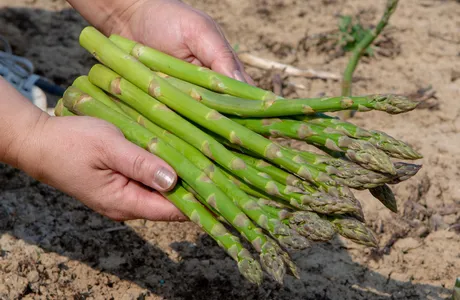The Peruvian asparagus season is currently up in the number of cases shipped compared with the same time last year. Good growing conditions and continued steady weather has been attributed to the increase in production. But despite the strong start, suppliers expect the crop to end up being close to or even below the final figure for last year.
"Peru as a country is up 500,000 cases compared to the same time last year," observed Jeff Friedman of CarbAmericas. "Newer acres have started to come on and the weather has been very stable, resulting in a strong start. However, we expect that by the end of the season, overall volumes will be similar to or slightly less than last year."

Freight rates the problem this year
While last year saw poor weather conditions and damaged crops, this year very high freight rates are hurting the Peruvian asparagus deal. Friedman said there is simply a lack of cargo aircraft flying between Peru and the US, resulting in the high and inconsistent freight costs.
"The drama of the Peruvian asparagus deal this year is the lack of planes and the inconsistency of freight rates," he explained. "The planes that are available are expensive, and we have seen the cost rise from an average of 80 or 90 cents per kilo, to an average of over $1 per kilo and up to $1.50. It's difficult for the market to absorb the cost when it reaches that level."
Not surprisingly, asparagus growers in Mexico are benefiting from this and Friedman said Peru shippers are not helping themselves. "Mexico gets stronger as Peru gets weaker," he noted. "The freight forwarders in Peru are also not doing their bit to improve the situation. It's hard to run promotions unless you're running boat asparagus. Even here, quality has been inconsistent and that all depends on the grower."
Smaller product also affecting market
Along with the high freight costs, suppliers have noted smaller sized coming out of Peru this year. This is a problem as such sizing is undesirable for the US market. "In general, Peru has been sending a lot of smalls and packing undersized asparagus," Friedman observed. "The quality has been okay but the US market is less interested in the smaller product. Additionally, it would be beneficial if growers in Peru were working harder to eliminate white butt, which has been a problem there as well as in Central Mexico."
CarbAmericas will be exhibiting at PMA this month at Booth #2479. Friedman said that many of the team will be there to discuss asparagus as well as their other range of products.
For more information:
Jeff Friedman
CarbAmericas
Tel: +1 (954) 786-0000
[email protected]
www.carbamericas.com
